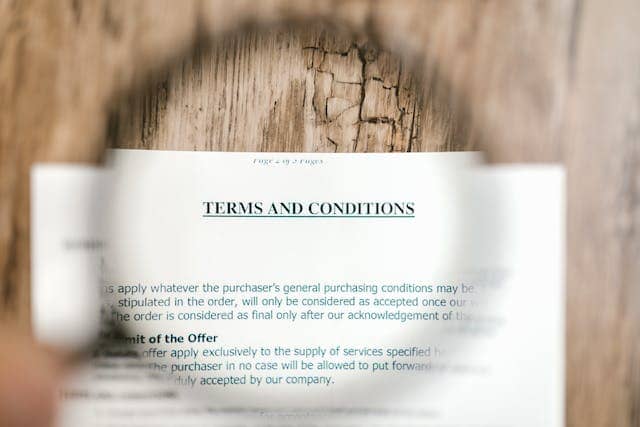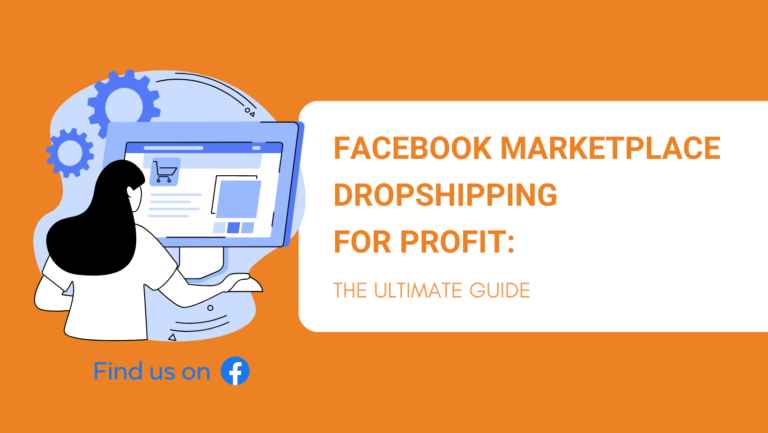Dropshipping on Facebook Marketplace is emerging as a lucrative option for entrepreneurs seeking to tap into a vast online audience. With Facebook’s substantial user base and social reach, this digital venue provides unprecedented access to customers.
Importantly, Facebook Marketplace is conducive to the dropshipping business model, enabling sellers to market products without maintaining physical stock, benefiting from the platform’s extensive network and trust.
Succeeding in the dropshipping realm on Facebook Marketplace requires an understanding of the platform’s intricacies, from setting up a seller profile to identifying products that resonate with Facebook’s diverse users.
As an entrepreneur in the eCommerce space, the unique advantages of Facebook, paired with dropshipping’s low-entry barriers, present an opportunity to establish and grow an online business that’s both profitable and aligned with consumer trends.
Key Takeaways
- Dropshipping on Facebook Marketplace offers access to a vast potential customer base.
- Understanding platform requirements and strategies is crucial for success.
- Facebook Marketplace enables low-cost business entry and growth potential.
Can You Dropship on Facebook Marketplace?
Is dropshipping allowed on Facebook?
Absolutely! You can engage in dropshipping on Facebook Marketplace. This social platform allows you to list and sell products without holding inventory.
How It Works:
- You find a supplier with a product you want to sell.
- Then, list that product on Facebook Marketplace, including compelling images and a detailed product description.
- Once a sale is made, place the order with your supplier.
- Your supplier ships the product directly to the customer.
What Is Facebook Marketplace Dropshipping?
Facebook Marketplace dropshipping offers a way to run an online business without needing to maintain inventory or operate a traditional store.
This approach to e-commerce enables you to oversee sales and fulfill customer orders directly through Facebook’s extensive social network.
What Is Dropshipping?
Dropshipping is an e-commerce model where you, as the dropshipper, sell products online without actually holding the goods in stock. The business model includes three primary roles:
- Supplier or Manufacturer: Provides the products and may handle order fulfillment.
- You (The Dropshipper): List products in your online store and manage sales.
- Customer: Purchases products from your online store.
How Does Facebook Marketplace Dropshipping Work?
Facebook Marketplace has emerged as a choice platform for dropshippers seeking to leverage its massive user base for their sales. Here’s how it unfolds on this particular social platform:
- List Products: You post products for sale on Facebook Marketplace, typically sourced from suppliers like AliExpress.
- Manage Orders: When a customer makes a purchase, you handle the transaction.
- Fulfill Orders: The supplier ships the product directly to the customer, which means you don’t deal with shipping logistics.
- Customer Service: You’re responsible for customer service, including handling any questions or issues.
By integrating the convenience of dropshipping with the wide-reaching audience of Facebook Marketplace, this model offers practicality and the potential for business success without the complexities of traditional retail.
Why Should You Dropship on Facebook Marketplace?
Considering dipping your toes into the world of eCommerce? The Facebook Marketplace presents a unique opportunity for dropshipping, leveraging its vast user base to connect with customers directly without the need for heavy upfront investment.
Pros of Facebook Marketplace Dropshipping
- Access to a Large Customer Base: Facebook Marketplace gives you exposure to roughly 3 billion active users, providing an extensive audience for your products.
- Minimal Investment Required: Unlike traditional retail, you don’t need to invest heavily in inventory, warehousing, or a physical storefront.
- Integrated Social Marketing: Facebook’s robust social platform facilitates targeted marketing strategies, allowing you to reach potential customers organically or through paid advertisements.
- Ease of Entry: Setting up a shop on Facebook Marketplace is straightforward, making it easier to start and scale your business.
- Direct Interaction with Customers: You can communicate directly with your customers, offering personalized service and building trust.
Cons of Facebook Marketplace Dropshipping
- Marketplace Dropshipping Policy: Ensure you understand and adhere to Facebook’s policies as they apply to dropshipping, as non-compliance could result in restrictions on your account.
- Competition: Just as it is easy for you to enter the market, it’s the same for others, which means you could face significant competition.
- Customer Service Demands: Direct interaction means you’ll need to invest time and resources into prompt and effective customer service.
- Dependence on Platform Algorithm: Your visibility on the platform may be impacted by changes to Facebook’s algorithms, affecting how customers see your listings.
- Marketing Strategy Required: You must be savvy with your marketing strategy to stand out, which could include learning the nuances of Facebook ads to reach your target audience.
What Are the Requirements to Sell on Facebook Marketplace?

If you’re planning to start selling on Facebook Marketplace, there are specific requirements you need to be aware of. This guide will walk you through each, helping you establish your dropshipping business effectively.
- Age Requirement: You must be at least 18 years old to sell on the platform. Being 18 qualifies you as an adult with the legal rights to engage in commerce on Facebook.
- Account Status: Your Facebook account should be in good standing. This means no recent violations of Facebook’s community standards or policies that would compromise your ability to sell.
- Local Presence: You should typically reside in one of the regions where the Marketplace is available. Having a local presence means you can reach your audience more effectively.
- Facebook Marketplace Dropshipping Policy Understanding: Familiarize yourself with the Marketplace Commerce Policies. These policies cover what items can be sold, prohibited sales practices, and dropshipping-specific rules.
- Business Strategy: Develop a solid business plan. Consider your target audience, select a well-defined niche, and craft a unique selling proposition to set yourself apart.
- Facebook Algorithm Insight: A good grasp of the Facebook algorithm is crucial. Tailor your posts with the right keywords and hashtags to boost visibility among your target audience.
How to Dropship on Facebook Marketplace? A Step-By-Step Guide
Dropshipping on Facebook Marketplace offers you a straightforward way to start an ecommerce business with minimal upfront investment.
Follow this step-by-step guide to begin selling online, leveraging one of the world’s largest social platforms to expand your reach and accelerate your business success.
1. Understand Facebook Marketplace.
Facebook Marketplace is an accessible platform where you can list products and connect with potential customers within your local area or beyond.
Grasp its potential for commerce, specifically how to dropship on Facebook Marketplace to harness its vast, engaged user base for your online business.
2. Create a Facebook Account.
You need a personal Facebook account as a prerequisite. Ensure your profile is set up with verifiable personal information, as trustworthiness is key when engaging in business on the platform.
3. Research Products to Dropship.
Before you begin, conduct thorough market research to identify the best items to dropship on Facebook Marketplace. Analyze your competition and demand within your chosen niche to select products with a proven track record of sales.
4. Find a Reliable Dropshipping Supplier.
Your next step is to partner with a supplier who can offer high-quality products and reliable shipping. Vet suppliers carefully for fulfillment efficiency to ensure customer satisfaction and repeat business.
5. Create a Business Page.
Set up a professional-looking Facebook Business Page connected to your personal account. This legitimizes your operations and provides customers a place to learn more about your products and brand.
6. Go to Facebook Marketplace.
Navigate to Facebook Marketplace through your Facebook account. Familiarize yourself with the interface as you will manage your listings and interact with buyers here.

7. Create New Listings.
When creating a listing, fill out every detail meticulously. Use high-quality images and write clear, concise descriptions. Include specifics like price, dimensions, and any other relevant details about the products you are dropshipping.
8. Publish Your Listings.
Once your listings are polished and complete, publish them to make them visible to Facebook Marketplace users. Ensure they comply with Facebook’s commerce policies to avoid any interruptions in selling.
9. Manage Orders and Customer Service.
Monitor your listings closely to manage orders promptly. Provide excellent customer service by responding to inquiries and addressing issues swiftly to build a strong reputation.
10. Leverage Facebook Ads.
Utilize Facebook Ads to increase the visibility of your listings. Refine your targeting strategy to reach potential customers who are most likely to be interested in your products.
11. Follow Facebook’s Commerce Policies.
Stay updated and compliant with Facebook’s commerce policies. Adherence to these rules is crucial for maintaining your privilege to sell on the platform and to avoid penalization.
12. Monitor and Optimize.
Keep track of your sales and customer feedback. Use this data to tweak your listings, adjust pricing, or explore different product niches to continuously improve your business strategy.
13. Scale Your Dropshipping Business.
As you grow, explore opportunities to scale your dropshipping business. Consider broadening your product lines, increasing ad spend, or expanding your reach to new market segments on the platform.
How to Find Products to Dropship on Facebook Marketplace?

When exploring dropshipping on Facebook Marketplace, your strategy should focus on identifying products that align with your target audience’s interests and needs.
Start by researching the best items to dropship, which typically have a strong demand and lower competition.
1. Analyze Demand. Look at what’s trending or consistently selling well. This can include everyday essentials, unique finds, or trending gadgets.
2. Define Your Niche. Specify the category that resonates with you and has potential on the platform. Whether it’s eco-friendly home goods or tech accessories, a clear niche can set you apart.
3. Check Competition. Review what others are selling to gauge the level of competition within your chosen niche. Lower competition can offer an advantageous entry point.
4. Use Tools. Leverage analytics tools that can provide insights into popular products and buyer behavior on Facebook Marketplace.
5. Listen to Feedback. Pay attention to customer inquiries and feedback for hints on what products are in demand.
6. Consistency Is Key. Finally, ensure the products you choose are consistently available from your suppliers to maintain reliability in your listings.
How to Find Dropshipping Suppliers for Facebook Marketplace?
When you’re venturing into dropshipping on Facebook Marketplace, the first step is to locate reliable suppliers. Here’s how to start your search:
1. Research and Identify Your Niche.
Before looking for suppliers, determine the types of products you want to sell.
This involves researching current trends, understanding your target audience’s preferences, and identifying a niche that is both in demand and suitable for Facebook Marketplace.
Use tools like Google Trends, social media platforms, and competitor analysis to identify popular and profitable niches.
2. Explore Online Supplier Directories.
Online supplier directories are databases of wholesale suppliers, including dropshippers. These directories categorize suppliers by niche, product types, and location.
Visit directories like Alibaba, AliExpress, SaleHoo, or Oberlo, and use their search and filter features to find suppliers that match your chosen niche.

3. Attend Trade Shows and Expos.
Trade shows and expos are events where you can meet potential suppliers in person. They provide opportunities to see products firsthand and build direct relationships with suppliers.
Research and attend relevant trade shows related to your niche. Prepare a list of questions and criteria to evaluate potential suppliers.
4. Utilize Search Engines.
Conducting searches on search engines like Google can uncover potential suppliers. This method involves using specific keywords related to your niche and “dropshipping supplier” to find suitable partners.
Search for terms like “best dropshipping suppliers for [niche/product]” or “dropship manufacturers for [niche/product].”
Social media platforms and online forums are excellent places to find supplier recommendations. Many dropshippers and e-commerce enthusiasts share their experiences and advice in these communities.
Join relevant groups on platforms like Facebook, Reddit, and LinkedIn. Participate in discussions and ask for supplier recommendations.
6. Contact Manufacturers Directly.
If you have a specific product in mind, contacting the manufacturer directly can be a way to find out about their dropshipping policies or get referrals to distributors.
Identify manufacturers in your niche and reach out via email or phone to inquire about dropshipping opportunities.
7. Evaluate Potential Suppliers.
Once you have a list of potential suppliers, evaluate them based on criteria such as product quality, pricing, shipping times, reliability, and customer service.
Create a checklist of your criteria and compare each supplier against it. You may also order samples to assess product quality.
8. Negotiate Terms and Conditions.
After selecting a supplier, negotiate terms that are favorable for your business. This may include pricing, minimum order quantities, shipping costs, and return policies.
Communicate clearly with the supplier about your expectations and requirements. Be prepared to compromise, but also know your non-negotiables.

9. Establish a Relationship.
Building a strong relationship with your supplier is key to long-term success. Good relationships can lead to better prices, priority support, and insider knowledge about new products.
Maintain regular communication, provide feedback, and be a reliable partner by adhering to agreements and making timely payments.
10. Continuously Monitor and Adjust.
The dropshipping market is dynamic, so it’s important to continuously monitor the performance of your suppliers and make adjustments as needed.
Regularly review your supplier’s performance in terms of product quality, fulfillment times, and customer satisfaction. If issues arise, discuss them with the supplier, or consider finding alternative suppliers if necessary.
Following these steps diligently will help you find suitable dropshipping suppliers for Facebook Marketplace, setting a solid foundation for your dropshipping business.
How Much Does It Cost to Dropship on Facebook Marketplace?
When you start dropshipping on Facebook Marketplace, you’ll want to consider your initial investment. This investment can vary significantly but generally includes costs for sourcing products, setting up your business page, and potential advertising expenses.
Product Sourcing: You’re not handling physical inventory, but you still need to pay your supplier for the products. Prices will vary depending on the items you choose to sell.
Fulfillment Costs: Often, your supplier handles fulfillment. Ensure their prices are competitive because this affects your profitability.
Facebook Marketplace Fees: As of our last update, Facebook doesn’t charge listing fees for items you sell on Marketplace. However, always check for the latest fee structure to avoid surprises.
Advertising: While not compulsory, investing in Facebook ads can increase your visibility. You control your ad spend, starting with a few dollars a day.

Finally, your profit will depend on how well you price your products. After accounting for the cost of goods sold and other expenses, the remaining amount is your profit.
While some dropshippers aim for a $5 profit on low-ticket items, for more expensive items, you might seek higher margins.
Always monitor your expenses versus revenue to ensure a healthy profit. Keep your costs in check, and you can run a successful dropshipping business on Facebook Marketplace.
Strategies for Success in Facebook Marketplace Dropshipping
1. Conduct Thorough Market Research.
Begin by investigating the market to identify which products are in high demand on Facebook Marketplace.
Understand your potential customers’ preferences and the price points they’re comfortable with. This step is essential for choosing the right niche that has less competition and more sales opportunities.
2. Understand Your Competition.
You should know who you are competing against. Look at other sellers in your chosen niche and analyze their strategies.
Watch their product offerings, customer engagement, and marketing tactics. Use this information to differentiate your offerings and position yourself strategically in the marketplace.
3. Create Engaging Listings.
Product listings are your storefront. Make them pop with high-quality images, detailed descriptions, and clear pricing. Remember that good listings can improve visibility and attract more customers.
4. Leverage Facebook Marketing Tools.
Take full advantage of Facebook’s built-in marketing tools. Utilize ads to target your ideal customer demographic and drive traffic to your listings. Engage with your audience using posts and direct messaging to build trust and encourage repeat business.
5. Maintain Excellent Customer Service.
Exceptional customer service leads to positive reviews and repeat purchases. Respond to inquiries promptly, resolve issues quickly, and always maintain a friendly approach. Ensure your customers feel valued and cared for.
6. Optimize for Sales Conversion.
Track and analyze your results to see what works and what doesn’t. Adjust your strategies accordingly to optimize for higher sales conversions.
Stay flexible and be ready to tweak your approach to meet changing market trends and customer preferences.

FAQs about Facebook Marketplace Dropshipping
In this section, we address some common queries about Facebook Marketplace dropshipping to help you understand its profitability, product limitations, emerging trends, crucial metrics for success, and the role of paid advertising in this business model.
Is Dropshipping on Facebook Marketplace Profitable?
Dropshipping on Facebook Marketplace can be a lucrative venture if approached correctly.
Factors such as product niche, competition, item quality, and your marketing and customer service skills play pivotal roles in determining profitability.
It is also influenced by how well you understand and cater to the platform’s audience.
What Should I Avoid Selling on Facebook Marketplace?
When selling on Facebook Marketplace, avoid items that violate Facebook’s community guidelines, such as adult products, alcohol, or counterfeit items.
Also, stay clear of products that are easily breakable, have long shipping times, or are saturated in the market, which could hinder your ability to sell effectively.
What Are the Latest Trends in Facebook Marketplace Dropshipping?
Staying current with trends is vital for dropshipping success. Eco-friendly products, home fitness gear, and remote work accessories are gaining traction.
Keep an eye on shifting consumer behaviors and preferences to adjust your product selection accordingly.
What Are the Key Metrics to Track for Dropshipping Success?
For dropshipping on Facebook Marketplace, closely monitor metrics such as conversion rate, average order value, customer acquisition cost, and seller performance metrics like order defect rate.
These insights will guide your strategies for inventory, marketing, and customer service.
Do You Need to Run Paid Ads?
Paid ads are not a requirement for success on Facebook Marketplace, but they can increase visibility and sales.
Consider your budget and profit margins when deciding if paid advertisements are a viable strategy for your dropshipping business.
Starting without ads and gradually incorporating them could be a way to gauge their effectiveness for your particular products.
Start Dropshipping on Facebook Marketplace with Niche
With billions of active users, Facebook Marketplace presents a substantial opportunity to showcase your niche products to a vast and diverse customer base.
Start by identifying a specific niche, as it allows you to focus on a particular market segment and curate products that resonate deeply with your target audience.
Identifying Your Niche
- Research current trends.
- Analyze market demands.
- Consider your personal interests.
Once you’ve pinpointed your niche, the next step is to find reliable suppliers who can provide you with good quality products.
Partnering with a trustworthy supplier equips you to maintain a high standard of service, which is vital for building customer trust and loyalty.
Remember, your dropshipping success depends on how well you present your products. Take advantage of the various features Facebook Marketplace offers, such as creating detailed product listings and using high-quality images.
Tips for Product Listings
- Use clear, high-resolution images.
- Write descriptive product titles.
- Include detailed product descriptions.
Finally, for those who are ready to streamline their dropshipping process, consolidating your sourcing and shipping can save time and reduce headaches.
If you’re looking to get a head start with sourcing your niche products, consider submitting a sourcing request.
Our team can help you source quality products tailored to your business needs, allowing you to focus more on growing your customer base on Facebook Marketplace.


excellent info
I like
This is the information I was looking for, thank y’all.
Say I use AliExpress. Will the costumer not see that it got delivered from there?
Hello Jim, thank you for stopping by. It’s best to inform the supplier beforehand that you plan to do blind dropshipping. This way, they will not attach any of their details to the package. Additionally, it may be helpful to order one for yourself to ensure that the product is packed in a way that aligns with your requirements. If you’d like to learn more about blind dropshipping, this post may be helpful: https://nichedropshipping.com/blind-dropshipping/